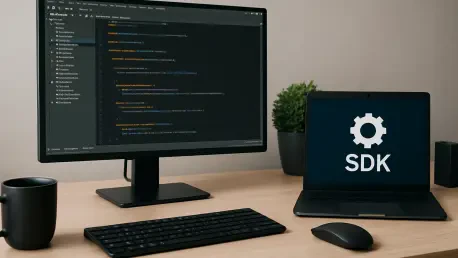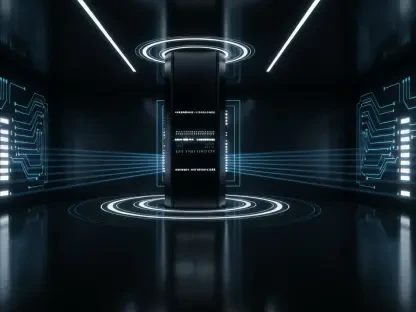In the ever-evolving landscape of geospatial technology, developers building mapping applications face constant challenges in keeping up with software updates that can make or break their projects, and the ArcGIS Maps SDK for JavaScript has long been a trusted resource for creating sophisticated geospatial solutions. However, managing updates under its traditional versioning system often left developers grappling with uncertainty about the scope and impact of changes. Esri, the company behind this powerful SDK, has recently unveiled a transformative shift by adopting semantic versioning, commonly known as SemVer. This change is not merely a technical adjustment but a strategic move to bring greater clarity, predictability, and alignment with modern development practices. As the industry demands smoother workflows, this transition signals a commitment to enhancing the developer experience, ensuring that upgrades are no longer a guessing game but a well-structured process tailored to meet contemporary needs.
Decoding the Shift to Semantic Versioning
Semantic versioning, or SemVer, introduces a clear and systematic approach to version numbering with its MAJOR.MINOR.PATCH format, designed to communicate the nature of changes in each release. A major version increment indicates breaking changes that might require code adjustments, a minor increment signals the addition of backward-compatible features, and a patch increment focuses on bug fixes without introducing disruptions. This structured method stands in stark contrast to the SDK’s previous system, where version numbers like 4.33 offered little insight into potential risks. For developers, SemVer provides an immediate understanding of whether an update is safe to implement or demands careful review, significantly reducing the chances of unexpected issues. This transparency is crucial for teams managing intricate geospatial applications, as it allows them to prioritize updates based on project timelines and resource availability, fostering a more controlled and efficient development environment.
Beyond the immediate clarity SemVer offers, its adoption by Esri reflects a broader push toward aligning with industry standards that prioritize developer confidence. Unlike the earlier approach where updates could unpredictably impact existing code, this new framework ensures that each version number serves as a quick reference for assessing compatibility. Developers can now make informed decisions about integrating updates without the fear of silent disruptions derailing their work. Additionally, SemVer’s compatibility with widely used dependency management tools enhances automation in tracking and applying updates, streamlining workflows. This shift is particularly beneficial for those maintaining large-scale projects, as it minimizes downtime and mitigates the risk of compatibility issues across different components. By embracing this versioning standard, the SDK positions itself as a more reliable and forward-thinking tool, catering to the needs of a global developer community seeking stability in an often unpredictable tech landscape.
Driving Forces Behind the Change
The decision to transition the ArcGIS Maps SDK for JavaScript to SemVer is underpinned by a clear intent to address longstanding frustrations faced by developers during updates. Under the legacy versioning system, the lack of transparency often resulted in unforeseen challenges, with even minor updates occasionally introducing breaking changes that disrupted workflows. SemVer counters this by explicitly signaling the scope of changes through its version numbers, empowering developers to anticipate the level of effort required for integration. This move not only enhances predictability but also aligns the SDK with modern software development practices, ensuring that updates are less of a gamble and more of a calculated step. Esri’s focus on clarity demonstrates a responsiveness to community feedback, aiming to build trust and reliability among users who depend on the SDK for critical applications.
Another compelling reason for this shift lies in the seamless integration with contemporary development tools and ecosystems that support SemVer. Platforms like npm and Yarn, along with automation tools such as Renovate and Dependabot, are designed to handle semantic versioning efficiently, enabling safer and more automated dependency updates. This compatibility reduces the manual burden on development teams, lowering the risk of errors during upgrades and cutting down on support costs. Furthermore, by batching breaking changes into major releases and delivering incremental improvements through minor updates, the new system facilitates better risk management. Developers can plan for significant changes at predictable intervals while benefiting from regular enhancements without the constant threat of disruption. This strategic alignment with industry norms underscores Esri’s commitment to fostering an environment where innovation and stability coexist, ultimately enhancing the SDK’s value in the geospatial development sphere.
Mapping Out a Structured Release Timeline
To support the adoption of SemVer, Esri has established a well-defined release schedule for the ArcGIS Maps SDK for JavaScript, ensuring developers can anticipate and prepare for updates with confidence. The transition begins with the move from version 4.34 to 5.0 in early 2026, a step that primarily reflects the adoption of the new versioning framework rather than a sweeping functional overhaul. Starting in 2026, major releases are slated for each February, such as 5.0 initially and 6.0 in 2027, typically encompassing breaking changes or substantial updates. Meanwhile, minor releases scheduled for June and October will focus on introducing backward-compatible features and improvements. This consistent cadence offers a roadmap for developers to allocate resources effectively, knowing precisely when to expect significant shifts versus smaller, safer updates, thus minimizing surprises and optimizing project planning.
The predictable nature of this release timeline extends beyond mere scheduling to fundamentally reshape how developers interact with the SDK. With major updates confined to a specific annual window, teams can strategically time their upgrade efforts to align with project cycles, reducing the likelihood of mid-project disruptions. Minor releases, occurring biannually, ensure a steady stream of enhancements and fixes without the looming threat of compatibility issues, allowing for continuous improvement in application performance. This structured approach also aids in testing and validation processes, as developers can anticipate the nature of changes based on the release type and prepare accordingly. By providing such foresight, Esri not only enhances operational efficiency for development teams but also reinforces the SDK’s role as a dependable tool in the fast-paced world of geospatial technology, catering to the practical needs of its user base with a focus on minimizing friction.
Implications for Support and Ecosystem Alignment
Alongside the versioning update, Esri has revised the support lifecycle policies for the ArcGIS Maps SDK for JavaScript to complement the SemVer framework, ensuring a cohesive experience for developers. Under the new guidelines, each release remains in general availability until the subsequent minor release, while major versions receive extended support for three years from their initial launch. Bug fixes and patches are restricted to the latest minor version within a supported major release, maintaining a streamlined focus on current iterations. These adjustments prevent developers from being left unsupported while avoiding the complexity of maintaining outdated versions indefinitely. Importantly, existing releases like 4.34 remain unaffected by these changes, providing continuity for those currently relying on older versions as they plan their transition to the updated system.
A significant aspect of this shift is the synchronization of release cycles across Esri’s broader product ecosystem, enhancing integration and compatibility. The SDK’s update schedule now aligns with that of ArcGIS Online and the Calcite Design System, a key component for user interface elements that already adheres to SemVer principles. This coordinated approach ensures that major releases across these platforms occur in tandem, reducing the risk of mismatches that could complicate development efforts. For developers building comprehensive geospatial solutions, this alignment translates to fewer hurdles when integrating new features or updates across different tools. By fostering a unified release strategy, Esri creates a more cohesive environment where components work together seamlessly, ultimately simplifying the process of crafting robust applications and reinforcing the SDK’s position as a cornerstone of geospatial innovation.
Reflecting on a Developer-Centric Evolution
Looking back, the adoption of semantic versioning by the ArcGIS Maps SDK for JavaScript stood as a pivotal moment in Esri’s efforts to refine the developer experience. This transition, which unfolded with a clear release schedule starting in 2026 and synchronized updates across related platforms, addressed critical pain points around update unpredictability. The structured MAJOR.MINOR.PATCH format, paired with revised support policies, provided developers with the tools to navigate upgrades confidently. As a result, teams could plan effectively, access new features safely, and integrate with modern tooling without the disruptions that once plagued the process. Moving forward, developers were encouraged to leverage this predictable framework by mapping out upgrade strategies, aligning project timelines with release cycles, and exploring integration opportunities within Esri’s aligned ecosystem. This shift not only modernized the SDK but also set a precedent for prioritizing transparency and stability in geospatial development tools.









